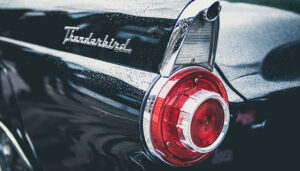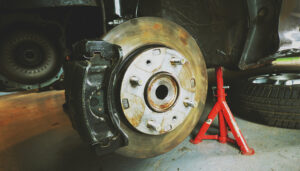Your car takes a lot of abuse whenever it’s out on the road. It endures scrapes and bumps from the road gravel, salt, and debris it picks up. It is no wonder why a lot of auto professionals recommend undercoating for cars. If you are not familiar with what it does, don’t worry because we’ll discuss everything you need to know in this article. Let us convince you how it can be beneficial for your vehicle.
Undercoating for Cars Explained
As your vehicle sustains damages from everyday wear and tear, it becomes more vulnerable to corrosion and rust. What undercoating does is it forms a layer of protection on your car’s undercarriage. It prevents the gas tank, floor, suspension parts and frame, wheel wells, pans, muffler, exhaust pipes, and other components from corroding.
What’s great about undercoating is it has ingredients designed for resisting heat. Its formulation is reliable enough to stand up against corrosion, rust, and damages caused by road salt, pebbles, and debris. Rubberized undercoating is one of the most popular variations of this product. However, other types have ingredients like fiberglass, ceramics, and silicone. By protecting your car’s undercarriage from rust and corrosion, you are able to extend the life of your vehicle as well.
If you live in an area that experiences seasonal changes, you might notice that many dealerships advertise the benefits of undercoating for trucks and cars. As we’ve mentioned, the salt on the road during the winter season can damage your vehicle’s undercarriage heavily, Down the road, rust, corrosion, and dents can result in costly repairs.
So, if you want to extend the life of your vehicle, you would want to learn how to apply undercoating for cars. It is also worth noting that this car maintenance procedure can also function as a sound dampener that makes your car quieter when you drive.
How to Undercoat a Car
Materials You’ll Need:
- Hydraulic jack & car blocks
- Degreaser agent
- Grinder
- Sandpaper (metal)
- Towel
- Primer & paint
- Paintbrush
- Undercoating
First Step: Lifting the Car
Use the hydraulic car jack to lift the car, then set it on the blocks. Make sure you secure them under the chassis frame. Moreover, remember to work in a properly ventilated room. You will be dealing with paint, so you need to ensure that you can breathe adequately inside the room.
Second Step: Cleaning the Undercarriage
Use the degreaser to clean the entire underside of your vehicle. Once you’ve done that, use the grinder to get rid of all the rust spots. Wipe away all the dust, and if there are smaller rusted areas remove them by using the metal sandpaper.
Third Step: Priming and Painting
After removing the rust and cleaning the area thoroughly, you can now apply the primer. Let it dry, then cover the area with black automotive paint. Let the paint dry, then move on to the next step.
Fourth Step: Applying Undercoating
Take the paintbrush then apply the car undercoating. Remember to apply the product liberally, covering every part of the car’s undercarriage. Make sure that every area exposed to the road has undercoating. After applying the first coat, wait for an hour for it to dry. Apply the second coating, then leave it overnight to dry. Ensure that the undercoating has dried completely before you drive your vehicle.
There are many ways to prolong the life of your vehicle. If you want to get more tips in caring for your car, browse through our blog posts.



